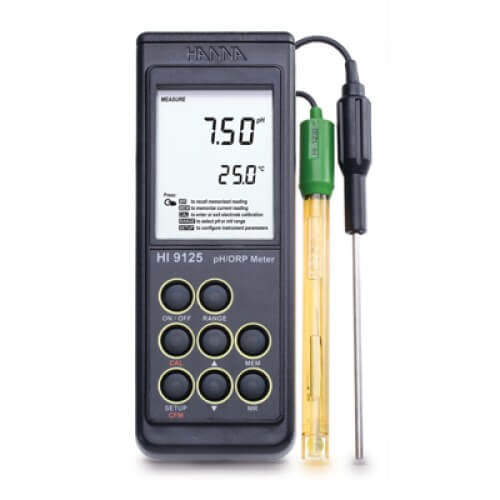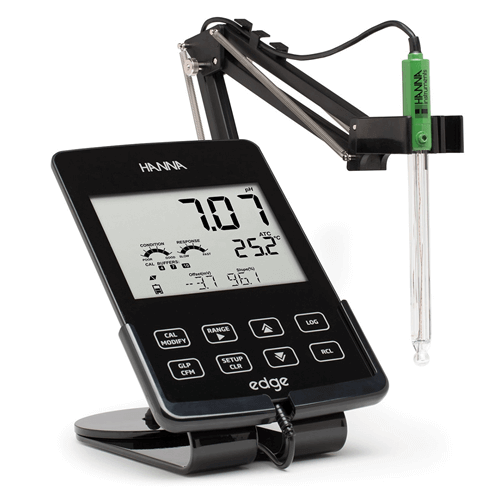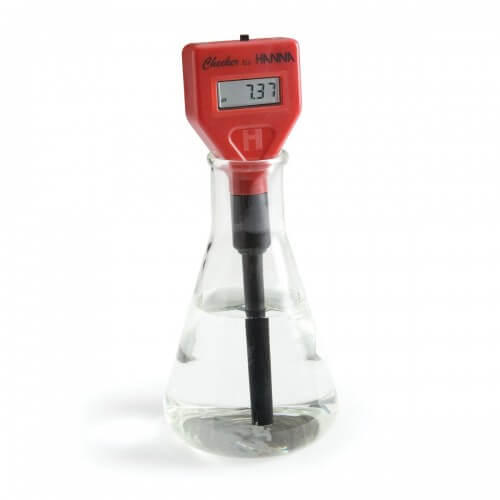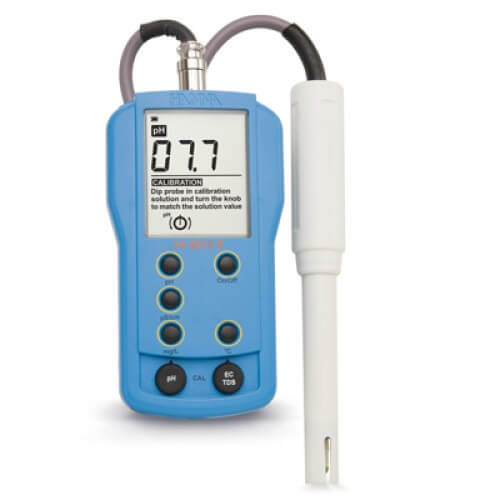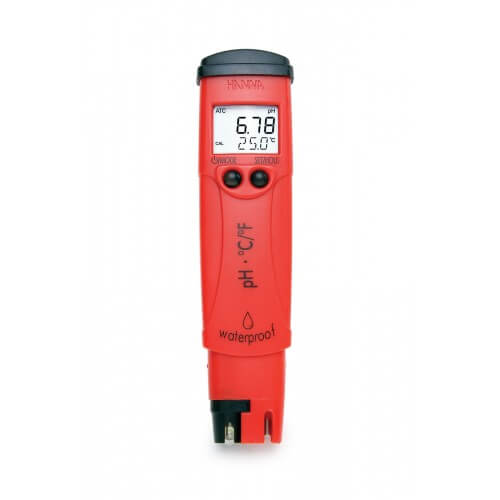Ph Meter
What is the Meaning of pH?
PH is derived from the mathematical symbol "p" for the negative logarithm and "H", the chemical symbol for Hydrogen. pH is a unit of measure that describes the degree of acidity or alkalinity of a solution. It is measured on a scale from 0 to 14.
PH = -log [H +]
What is PH Measurement?
The pH value of a substance is directly related to the ratio of hydrogen ion [H +] and hydroxyl ion [OH-] concentrations.
Quantitative information provided by the PH tester refers to the degree of activity of an acid or base in terms of hydrogen ion activity.
- If the concentration of H + is greater than OH-, the material is acidic; that is, the pH measurement is less than 7.
- If the OH concentration is greater than H +, the material is basic with pH value greater than 7.
- If equal amounts of H + and OH ions are present, the material is neutral with a pH of 7.
Acids and bases have free hydrogen and hydroxyl ions respectively. The relationship between hydrogen ions and hydroxyl ions is constant for a given set of conditions in a given solution, one can be determined by recognizing the other.
How to Measure PH?
A rough indicator of pH can be obtained using pH papers or indicators, which change color as the pH level changes. These indicators have limited accuracy and may be difficult to interpret accurately in colored or turbid samples. More accurate pH measurements are obtained with a digital pH meter. A pH tester system consists of three parts: a pH probe, a reference pH electrode, and a high input impedance meter.
The PH electrode can be thought of as a battery with a voltage that changes according to the pH of the measured solution. The pH probe is a hydrogen ion sensitive glass bulb with a millivolt output that changes due to changes in the relative hydrogen ion concentration inside and outside the bulb.
The reference electrode output does not change with the activity of the hydrogen ion.
The pH electrode has a very high internal resistance making it difficult to measure pH and voltage variation. The input impedance and leakage resistance of the pH meter are therefore important factors.
What is a Ph Meter?
The pH meter is basically a high impedance amplifier that accurately measures electrode voltages per minute and displays results directly in pH units on an analog or digital display.
In some cases, voltages can also be read for special applications or for use with ion-selective or Oxidation-Reduction Potential (ORP) electrodes.

